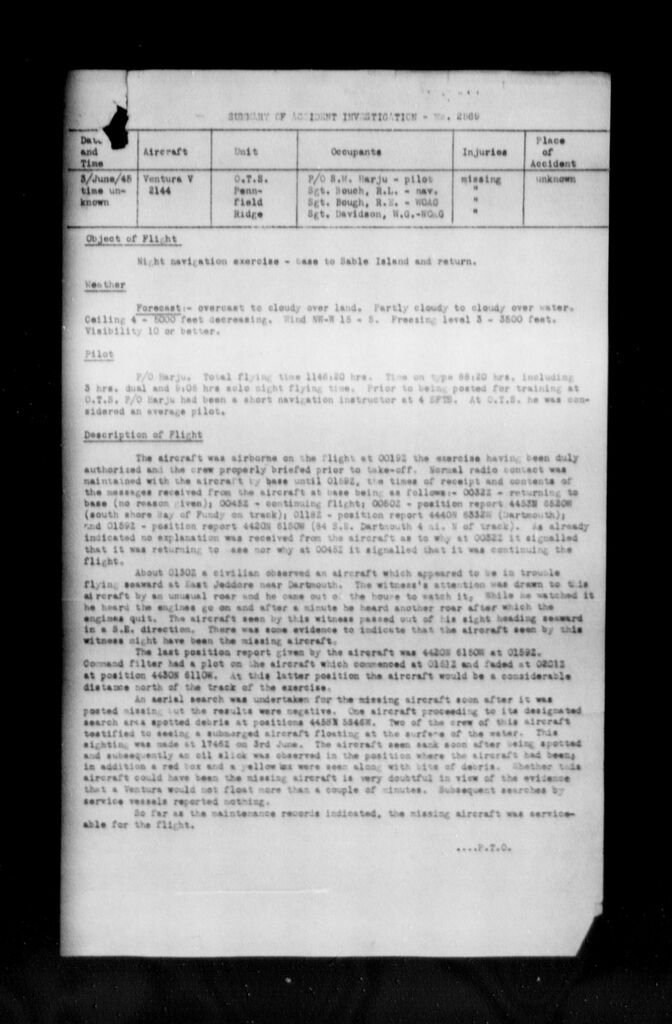
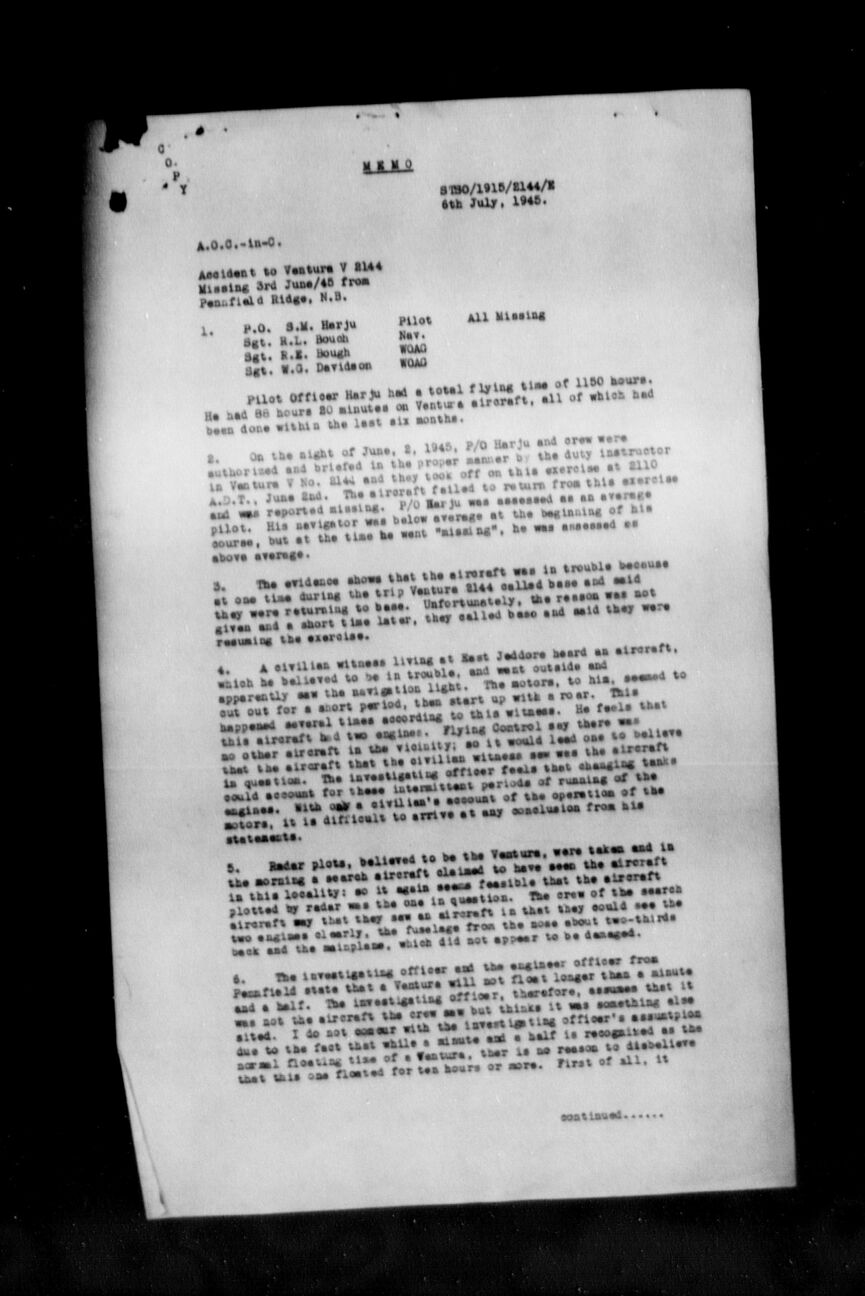
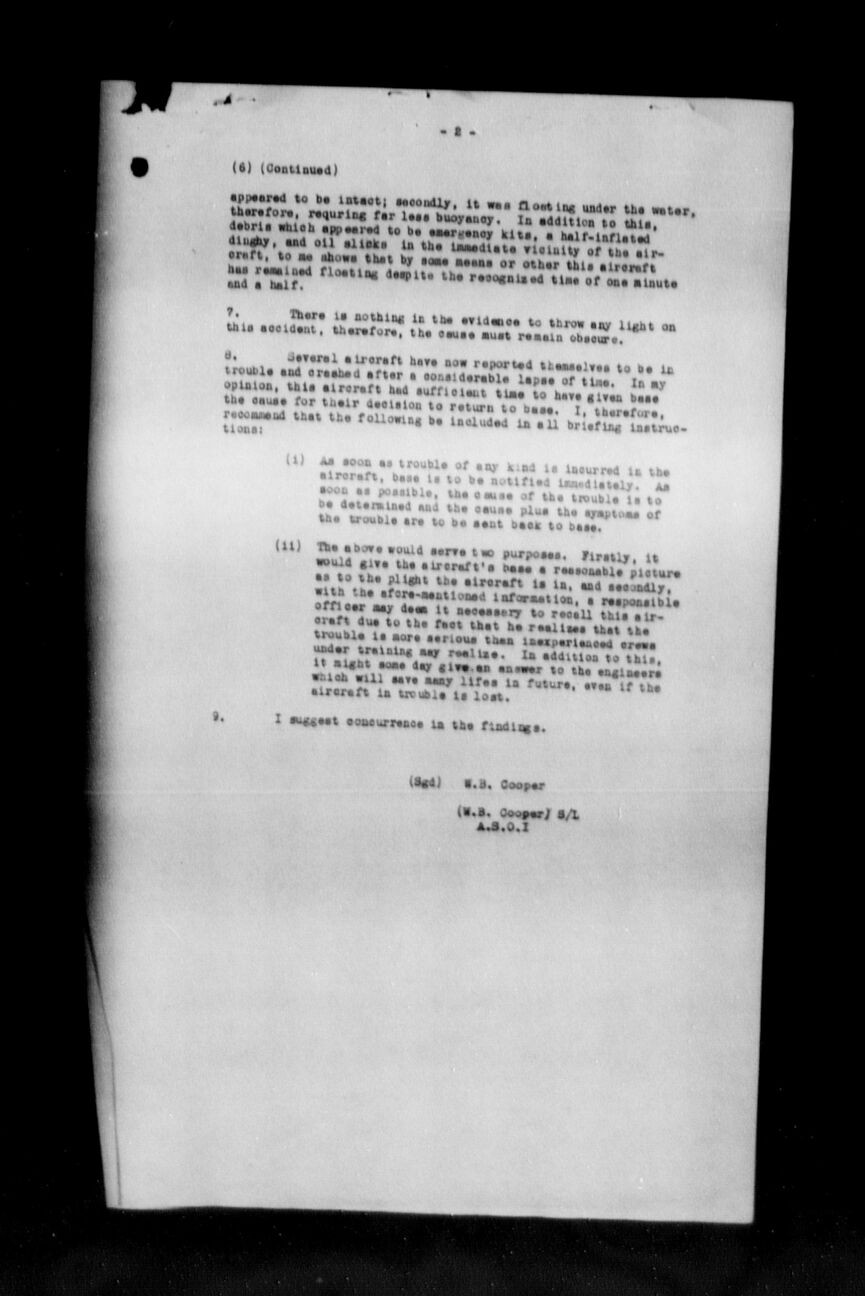
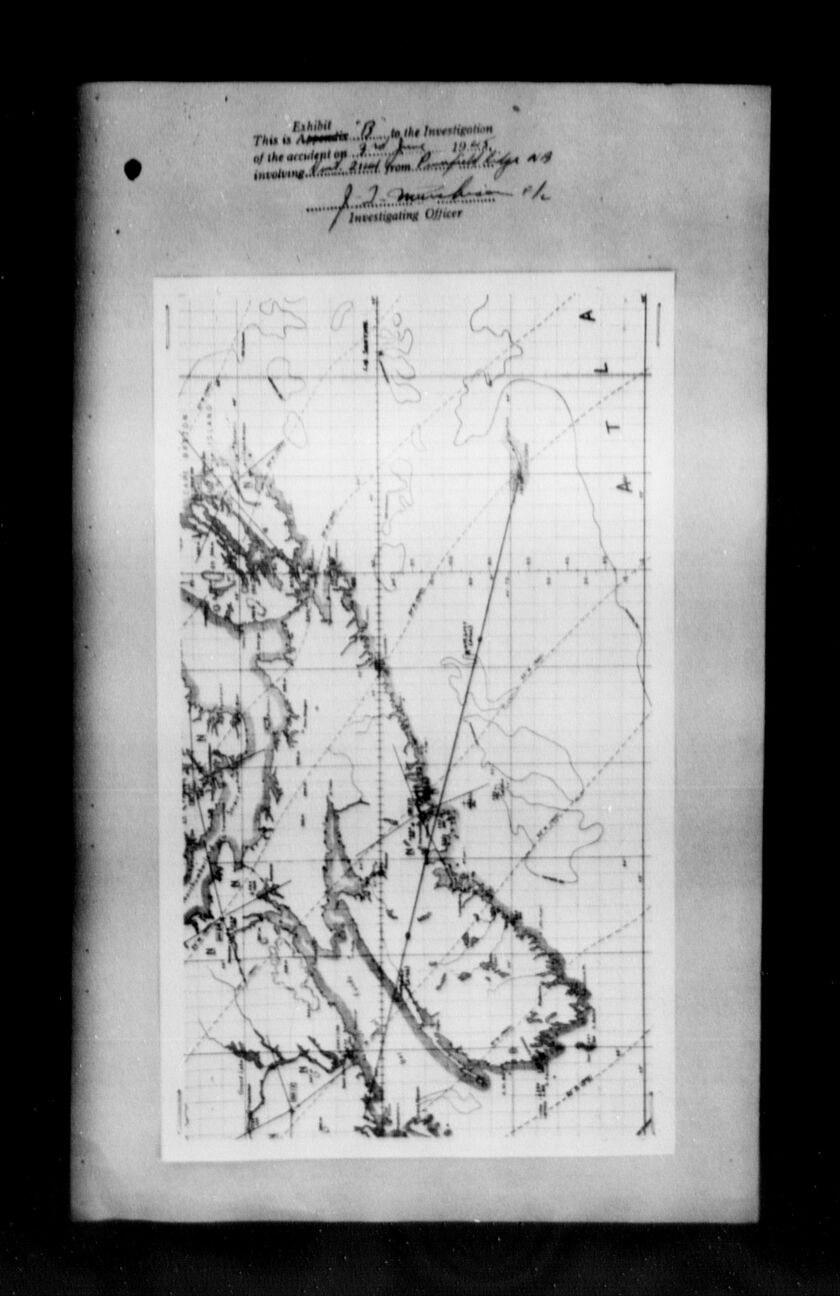
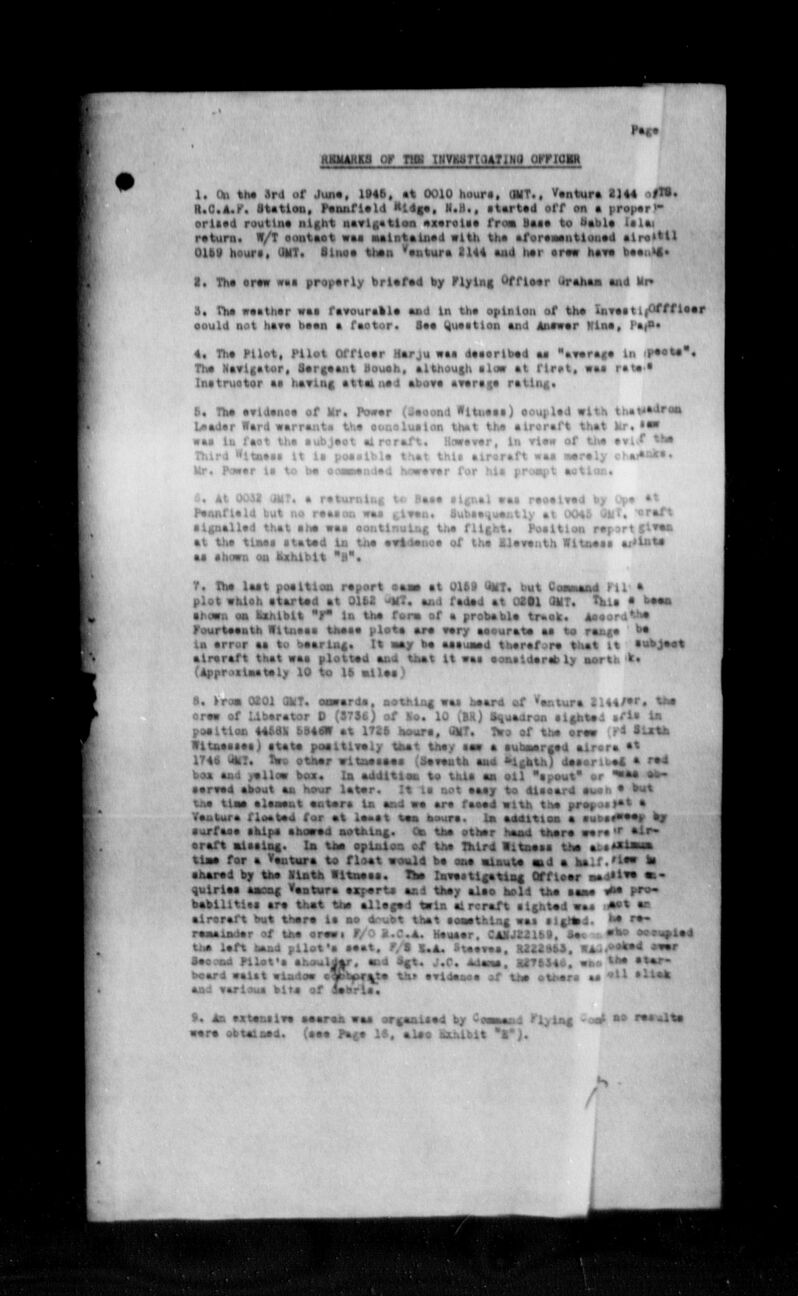
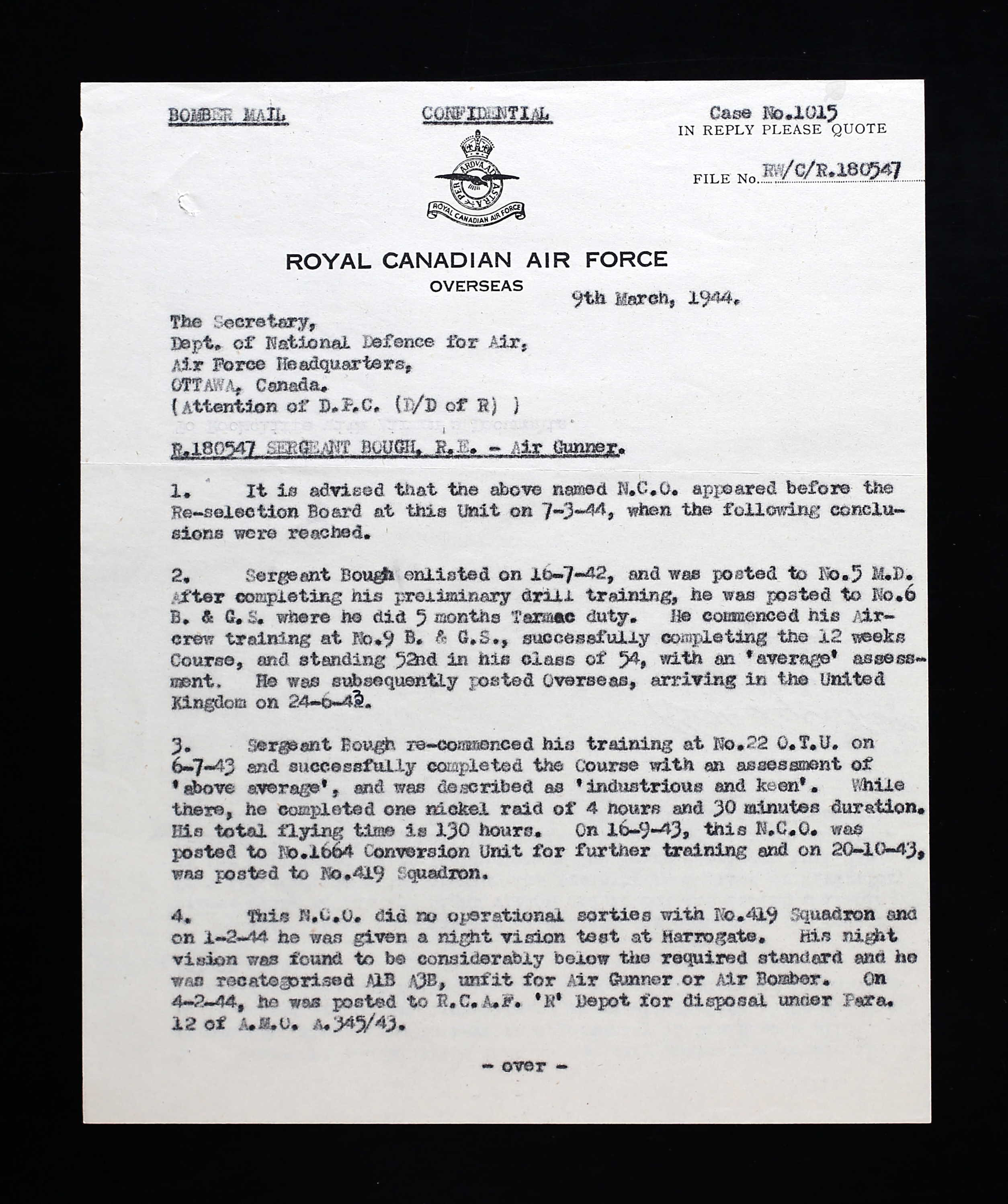
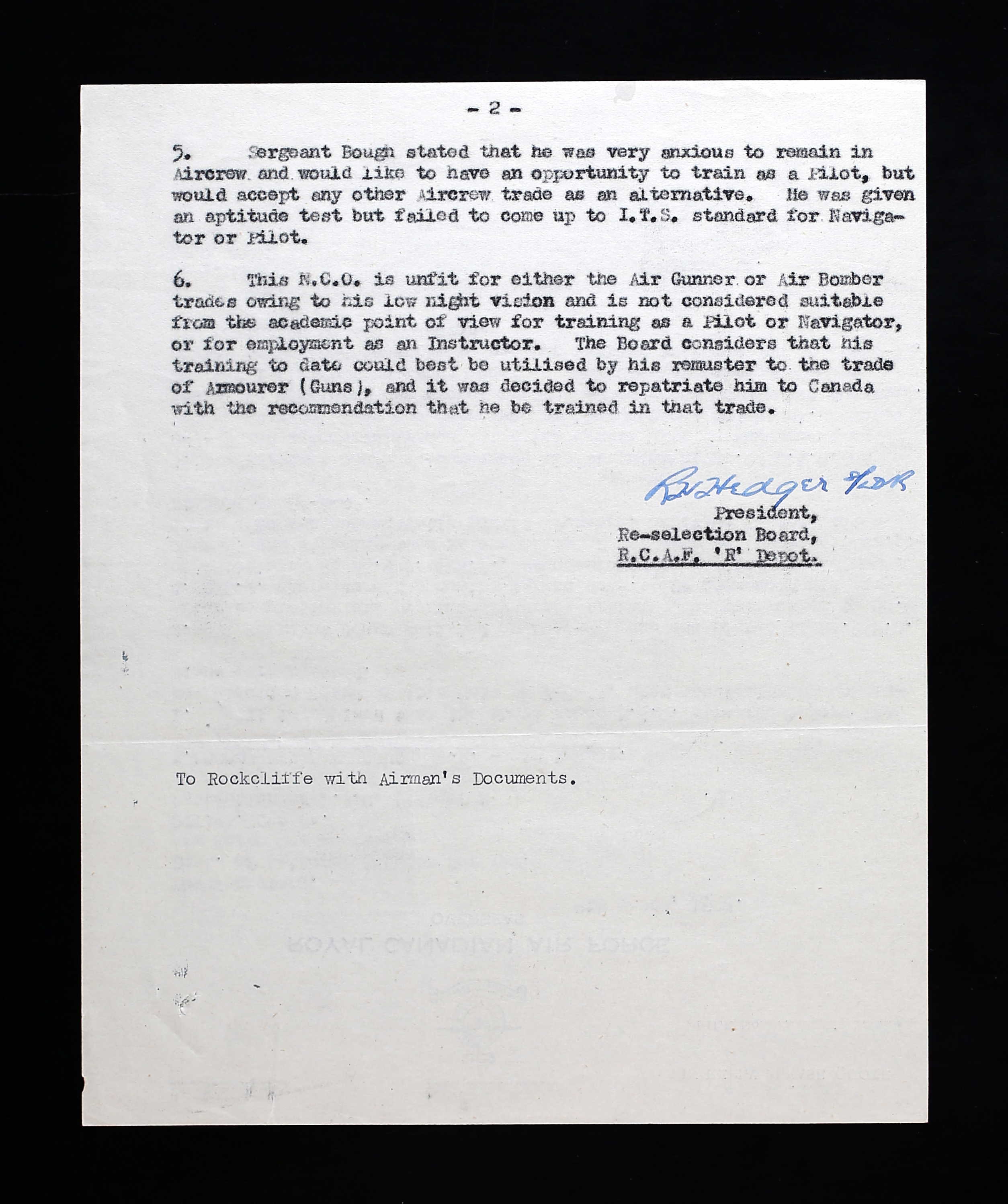
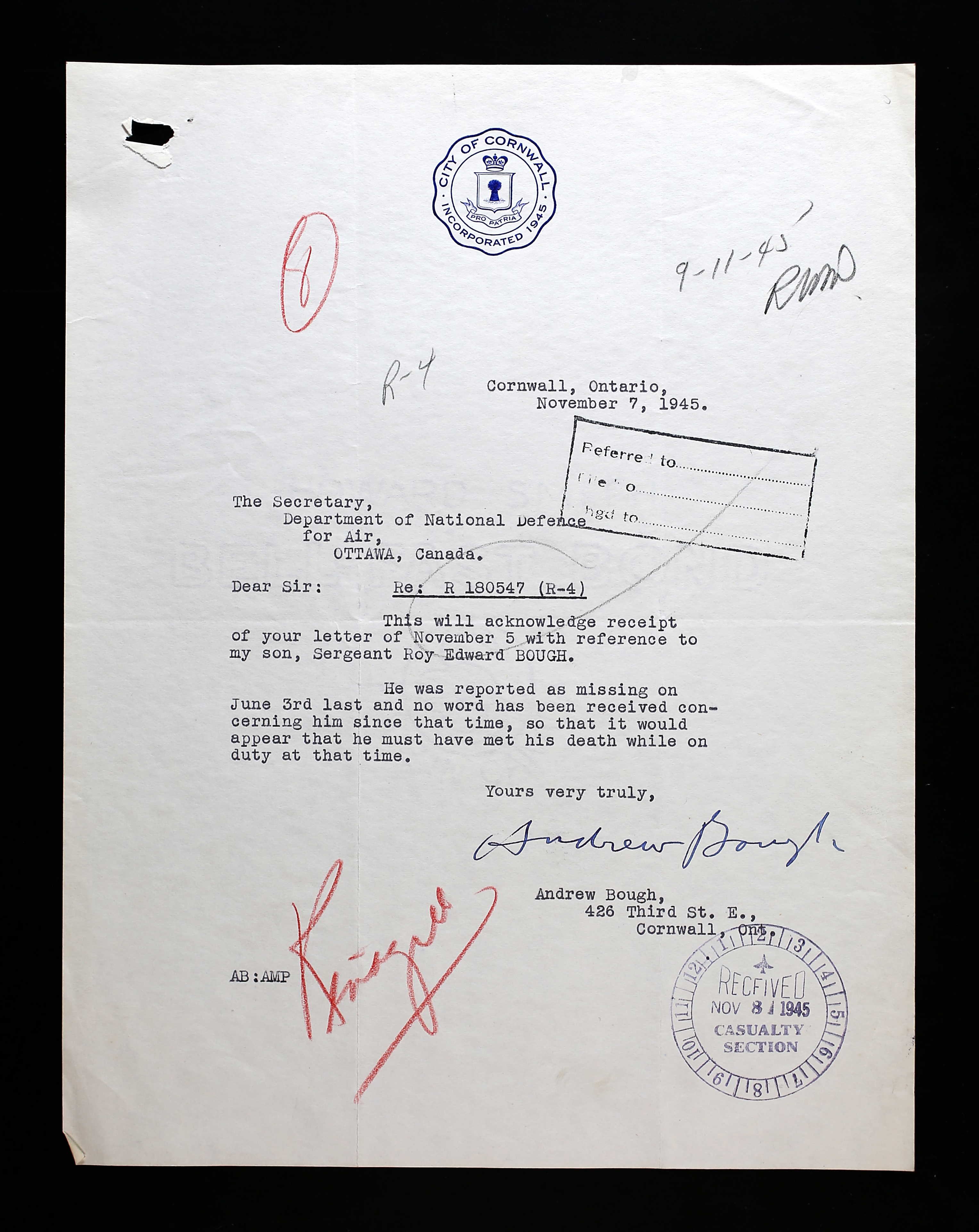
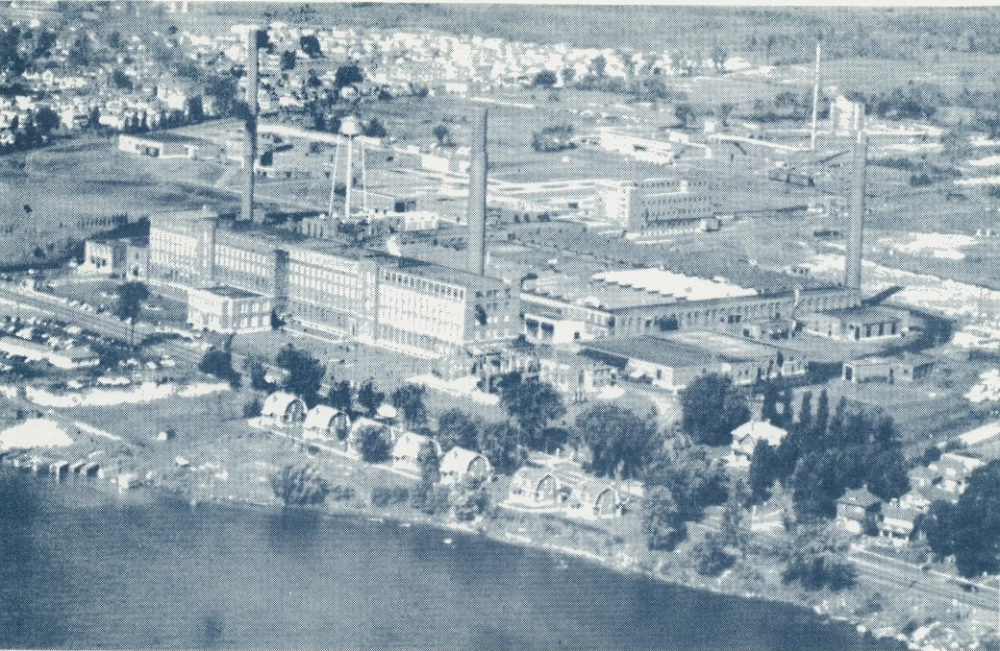
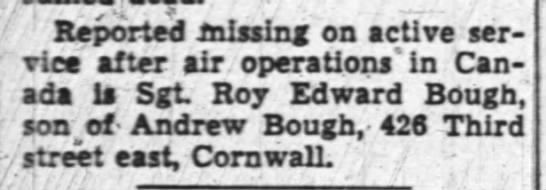
April 22, 1924 - June 3, 1945










Roy Edward Bough, born in Timmins, Ontario, was the son of Andrew Bough (1900-1972), townhall worker, and Florence May (nee Sparker) Bough (1896-1972) of Cornwall, Ontario. He had five brothers, David (d. 2000), Kenneth, (d. 2014), George (1921-2011), Lloyd, and Donald, who died at age 4 in 1936. and two sisters, Florence Hilda Walker (1919-2016) who was with the Salvation Army, Lillian May and Joan Elsie. Joan died in 1921 at the age of one. The family attended the Salvation Army Church.
Roy enjoyed softball and hockey, smoked eight cigarettes a day and indicated he did not drink alcohol. He had been a clerk in a stationary store for five months in 1940, then worked as a ‘spare hand’ at Courtaulds Canada Ltd, a fabric mill from 1940 to 1942.
“Wiry, standard mentality.” He stood 5’ 7 ½” tall and weighed 128 pounds in July 1942. Two years later, he was ½” taller and weighed 145 pounds. In July 1942: “Not impressive as aircrew material. Wants to be AG and should be given a chance. Fit physically.” Roy had grey eyes and dark brown hair with a fair complexion.
Roy had previous military experience with SD & G Highlanders, Cornwall in April 1942.
From his interview report: “Education and CT score just sufficient for AG. He should make the grade, anxious to go. Personal background satisfactory. Not too impressive. Should make good aircrew (AG material) if he applies himself. Seems a bit slow but should improve with training.”
He started his journey through the BCATP on July 16, 1942 at No. 5 Manning Depot, Lachine, Quebec until he was sent to No. 6 B&G School, Mountain View, Ontario on September 20, 1942 where he did five months of tarmac duty.
He was then sent to No. 9 B&G School, Mont Joli, Quebec until May 28, 1943. “63.68%. 52nd out of 54 in class. Neat in appearance, fair student, popular.”
Roy was sent to Halifax to Y Depot and RAF trainees pool, when he was sent overseas June 16, 1943 arriving in the UK on June 24, 1943. He recommenced his training at No. 22 O.T.U. and successfully completed the course with an assessment of ‘above average’ and was described as ‘industrious and keen.’
“He completed one nickel raid of four hours and 30 minutes duration. His total flying time is 130 hours. On 16-9-43, this NCO was posted to No. 1664 Conversion Unit for further training and on 20-10-43 was posted to 419 Squadron. This NCO did no operational sorties with 419 Squadron and on 1-2-44 he was given a night vision test at Harrogate. [He was attached to 419 Squadron October 20, 1943 to February 4, 1944.] His night vision was found to be considerably below the required standard and he was recategorized…unfit for Air Gunner or Air Bomber. On 4-22-44, he was posted to RCAF R Depot for disposal…Sgt Bough stated that he was very anxious to remain in Aircrew and would like to have an opportunity to train as a Pilot, but would accept any other Aircrew trade as an alternative. He was given an aptitude test, but failed to come up to ITS standard for Navigator or Pilot. This NCO is unfit for either the Air Gunner or Air Bomber trades owing to his low night vision and is not considered suitable from the academic point of view for training as Pilot of Navigator, or for employment as an Instructor. The Board considered that his training to date could best be utilized by his remuster to the trade of Armourer (guns) and it was decided to repatriate him to Canada with the recommendation that he be trained in that trade.” Roy made two training trips with 419 Squadron on November 16 and 18, 1943.
He was sent to Rockcliffe, Ontario March 1944 until June 25, 1944, then sent to No. 4 Wireless School Guelph, Ontario June 26, 1944.
Mount Hope and No. 1 Wireless School was his next destination as of December 29, 1944 until March 16, 1945. “Good operator.” He was on a refresher course. Air work: 69.1%. Ground work: 76.9%. Nav. 86%. He was 85th out of 86 in the class.
Pennfield Ridge, NB welcomed Roy on March 17, 1945 where he became part of the staff.
Roy had $200 in Victory Loan Bonds, plus had two life insurance policies worth $1100.
Roy was AWL February 15-17, 1943, and he forfeited two days’ pay. He was also AWL on June 26, 1944 from 0630 hours until 1000 hours on June 27, 1944. He was reprimanded.
Ventura 2144 was on night operational training flight was serviceable at time of take-off. There was a decision to turn back which was later reversed. The weather was good, and no distress signal was received at any time. An accident occurred approximately 100 miles east of Halifax.
Crew aboard Ventura GRV 2144: • Sgt Robert Leonard Bouch, R270058, navigator • Sgt Roy Edward Bough, R180547, air gunner • F/Sgt William Gordon Davidson, R221311 • F/O Sulo Matt Harju, J24723
A Court of Inquiry was struck. Fourteen witnesses were called. [Full file of accident in reel T12342, starting at image 4285.]
OBJECT OF FLIGHT: Night navigation exercises. Bae to Sable Island and back. WEATHER: Forecast: overcast to cloudy over land. Partly cloudy to cloudy over water. Ceiling: 4-5000 feet decreasing. Wing NWW 15-5. Freezing level 3, 3500 feet. Visibility 10 or better. PILOT: F/O Harju total flying time 1146.20 hours. Time on type 88.20 hours, including 3 hours dual and 9:05 hours solo night flying time. Prior to being posted for training at OTS, P/O Harju had been a short navigation instructor at No. 4 SFTS. At OTS, he was considered an average pilot. DESCRIPTION OF FLIGHT: The aircraft was airborne on the flight at 00192, the exercise have been duly just authorized and the crew properly briefed prior to take off. Normal radio contact was maintained with the aircraft by base until 00192, the times of receipt and contents of the messages received from the aircraft at base being as follows: 00322 returning to base bracket no reason given bracket; 00452: continuing flight. [They were then over Dartmouth, then SE of Dartmouth.]
In a memo dated July 6, 1945: “P/O Harju was assessed as an average pilot. His navigator was below average at the beginning of his course, but at the time he went ‘missing,’ he was assessed as above average. The evidence shows that the aircraft was in trouble because at one time during the trip, Ventura 2144 called base and said they were returning to bas. Unfortunately, the reason was not give and a short time later, they called base and said they were resuming the exercise.
“As already indicated, no explanation was received from the aircraft as to why at 00322 it signalled that it was returning to base nor why at 00452 at signal that it was continuing the flight. About 01302, a civilian observed an aircraft which appeared to be in trouble flying seaward at East Jeddore near Dartmouth. The witness’s attention was drawn to this aircraft by an unusual roar and he came out of the house to watch it. While he watched it, he heard the engines go on and after a minute he heard another roar after which engines quit. Seated the aircraft seen by this witness passed out of his sight heading seaward in a southeast direction. There was some evidence to indicate that the aircraft was seen by this witness might have been the missing aircraft. At this latter position the aircraft would be a considerable distance north of the track of the exercise. An aerial search was undertaken for the missing aircraft soon after it was posted missing but the results were negative. One aircraft proceeding to its designated search area spotted debris period two of the crew of this aircraft testified to seeing a submerged aircraft floating at the surface of the water. This sighting was made at 17462 on the 3rd of June. The aircraft seen sank soon after being spotted and subsequently an oil slick was observed in the position where the aircraft had been. In addition, a red box and a yellow box were seen along with bits of debris. Whether this aircraft could have been the missing aircraft is very doubtful in view of the evidence that a Ventura would not float more than a couple of minutes. Subsequent searches by service vessels reported nothing. So far as the maintenance records indicated, the missing aircraft was serviceable for the flight.
“Flying Control said that there were no other aircraft in the vicinity, so it would lead one to believe that the aircraft that the civilian witness saw was the aircraft in question. The investigating officer feels that changing tanks could account for these intermittent periods of running of the engines…The crew of the search aircraft way that they saw an aircraft in that they would see the two engines clearly, the fuselage from the nose about 2/3 back and the mainplane, which did not appear to be damaged. The investigating officer and the engineer officer from Pennfield state that if insurer will not float longer than a minute and a half. The investigating officer, therefore, assumes that it was not the aircraft the crew saw but thinks it was something else cited. I do not concur with the investigating officer’s assumption due to the fact that while a minute and a half is recognized as the normal floating time of a Ventura, there is no reason to disbelieve that this one floated for 10 hours or more. First of all, it appeared to be intact; secondly, it was floating under the water therefore, requiring far less buoyancy. In addition to this, debris which appeared to be emergency kits, 1/2 inflated dinghy, oil slicks in the immediate vicinity of the aircraft, to me show that by some means or other this aircraft has remained floating despite the recognized time of one minute Anna half. There is nothing in this evidence to throw any light on this accident, therefore the cause must remain obscure… several aircraft have now reported themselves to be in trouble and crashed after considerable lapse of time period in my opinion, this aircraft had sufficient time to have given base the cause for their decision to return to base. As soon as trouble of any kind is incurred in the aircraft, base is to be notified immediately. As soon as possible, the cause of the trouble is to be determined and the cause plus the symptoms of the trouble are to be sent back to base. The above would serve two purposes. Firstly, it would give the aircraft base a reasonable picture as to the plight the aircraft is in, and secondly with the aforementioned information, a responsible officer may deem it necessary to recall this aircraft due to the fact that he realises that the trouble is more serious than inexperienced crews under training may realize. In addition to this, it might someday give an answer to the engineers which will save many lives in the future, even if the aircraft in trouble is lost.” S/L W. B. Cooper, ASOI
G/C F. S. Wilkins, CI Accidents concurred.
In late October 1944, Mrs. Bough received a letter informing her that since Ed had no known grave, his name would appear on the Ottawa Memorial.